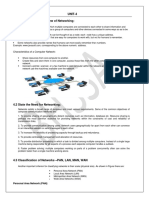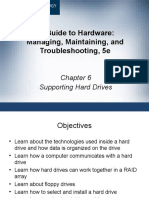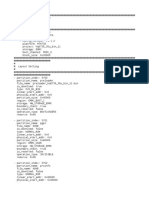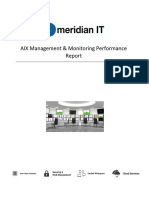0% found this document useful (0 votes)
230 views7 pagesNetworks (Workbook)
The document discusses key topics in computer networks including network fundamentals, data transmission, and wireless networking as outlined by the International Baccalaureate Computer Science curriculum. It defines different types of networks such as WAN, MAN, LAN, VLAN, SAN, and VPN. It also covers network components like hosts, nodes, servers, and clients. Advantages of networks include sharing peripherals, programs, data, improved communication, and information security. Local area networks can be either client-server or peer-to-peer architectures.
Uploaded by
MritrajCopyright
© © All Rights Reserved
We take content rights seriously. If you suspect this is your content, claim it here.
Available Formats
Download as PDF, TXT or read online on Scribd
0% found this document useful (0 votes)
230 views7 pagesNetworks (Workbook)
The document discusses key topics in computer networks including network fundamentals, data transmission, and wireless networking as outlined by the International Baccalaureate Computer Science curriculum. It defines different types of networks such as WAN, MAN, LAN, VLAN, SAN, and VPN. It also covers network components like hosts, nodes, servers, and clients. Advantages of networks include sharing peripherals, programs, data, improved communication, and information security. Local area networks can be either client-server or peer-to-peer architectures.
Uploaded by
MritrajCopyright
© © All Rights Reserved
We take content rights seriously. If you suspect this is your content, claim it here.
Available Formats
Download as PDF, TXT or read online on Scribd
/ 7






















































































